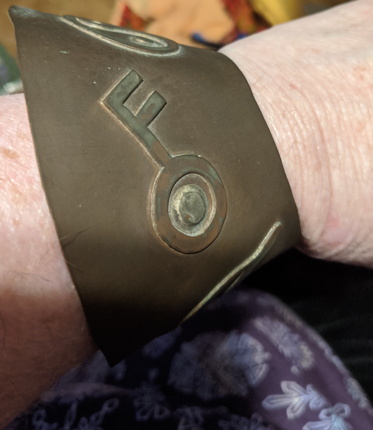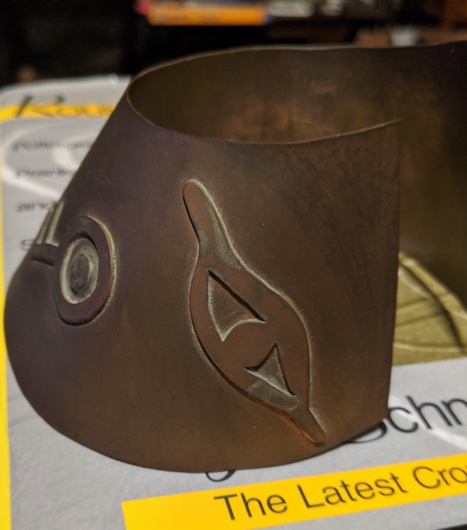Thu 28 May 2020
Dancing to Trickster’s tune
Posted by PJ under art, books, folklore, review, tricksters
No Comments
Review (plus a personal note): Round in Circles: Poltergeists, Pranksters, and the Secret History of Cropwatchers by Jim Schnabel.
Mr. Schnabel wrote this book in the 1990s, an American post-graduate student living in England and specializing in science writing. He himself turned hoaxer after studying the phenomena and, more closely, those caught up in the excitement of the phenomena. What I really liked about this book is that he manages to show the parade of human folly and the will to believe—the need to believe—without being mean-spirited. There’s plenty of understated humor, but mostly he allows people to display their nature in their own words. He captures the awe while still showing the painful and hilarious lengths people will go to protect their pet theories (and continue to get media attention and earn dollars, to boot). Even when these theories are debunked, some still can’t let go, resorting to conspiracy theories and black magic tales to save face.
The book demonstrates, although this was probably not Mr. Schnabel’s intent, how Trickster manipulates us all. Whether that trickster is embedded in human psychology or an outside force I will leave to others to decide for themselves. Mr. Schnabel admits that there is something mysterious at work which compels people to go into the fields and make pictograms and other ephemeral art in the secret dead of night. He does quite a nice job of evoking that mystery and compulsion. And when something genuinely unexplainable happens—a tractor driver caught on film being buzzed by a mysterious metallic orb comes to mind—Mr. Schnabel doesn’t shy away from showing it and doesn’t try to explain things away with strained rationalization. Even if the vast majority of these circles are hoaxes, he allows wiggle room, a tacit suggestion that perhaps a few may have some other explanation. The cropwatchers, however, are so caught up in their own theories that it’s an all or nothing for them. Mr. Schnabel lets us draw our own conclusions, and one of those is that many of the cropwatchers were missing out on a much grander mystery: that of the human imagination.
A Personal Note
I admit: I drank the Kool-Aid back in the day. I was swept up in the wonder and awe of the crop circles. To this day, even accepting the hoaxing, even after decades of serious disenchantment with the New Age, one of my regrets is that I missed seeing this formation by only two weeks:
Formed in July, it was harvested in mid-September, and I was at Silbury Hill in late September. I didn’t find out that I’d missed it until I was already back in the States.
But my awe didn’t need to actually witness one of these for myself to be caught up in the sensation of it all. Especially after this beauty appeared in a field near Alton Barnes in 1990 (a village I visited in 1988) and was broadcast all over the world:
The phenomena was evolving! The messages were getting more complex! I even incorporated a part of this one in some of the artwork I was making at the time:
And therein hangs a tale. Because it turns out most of the crop circles were all about art. Doug Bower and Dave Chorley, two 60-somethings, finally came forward and admitted they had started the craze and were doing circles as far back as the 70s “for a laugh†and for the pure joy of making large folk art in the fields. They never claimed to have made all the circles, although the newspaper that broke the story said they did, but D&D showed it was possible to hoax even the complex shapes that crop circle aficionados claimed (and still claim, some of them) could not have been done by the hand of man.
And that’s what catches Schnabel himself up in the hoaxing craze: the pure joy of being out in the English countryside in the darkness and making something bigger, grander, more magical than his individual self. And therein hangs another tale. These lovely things don’t need to be made by UFOs or earth spirits or fairies because all of those things live inside us, we complexly-layered human beings who often respond emotionally to things our intellects can’t grasp entirely. Trickster ties threads to our hands and feet, making us dance in the fields with crop stompers and think it’s all our idea.
Sure, it’s our idea. On the surface. But beneath the swirled grain of our imaginations lies a whole chthonic realm where other forces call the dance.
The Crop Circles
Round and round in a circle,
but not a circle: a cipher—
blank, yet potent with meaning,
universal and profoundly personal.
Each eye that falls on the corn
sees their own life rippling
through the wind in the fields:
their deceit, the circles deceit;
their pain, the circles pain;
their joy, their sorrow,
their wonder and fear
all caught in the circles’ round
and etched in the corn.
And what is the true meaning
of the patterns in the fields?
Only the same meaning
that each day brings:
I know that I do not know.
—PJ Thompson
(If any of you are interested in seeing more of that metalwork piece, I’ve put the pictures beneath the cut.)
Wow, that copper could really use some metal polish but unfortunately, I don’t have any at the moment.
I didn’t do such a great job with the Eye of Horus, but I think the other shapes turned out okay:






No Responses to “ Dancing to Trickster’s tune ”